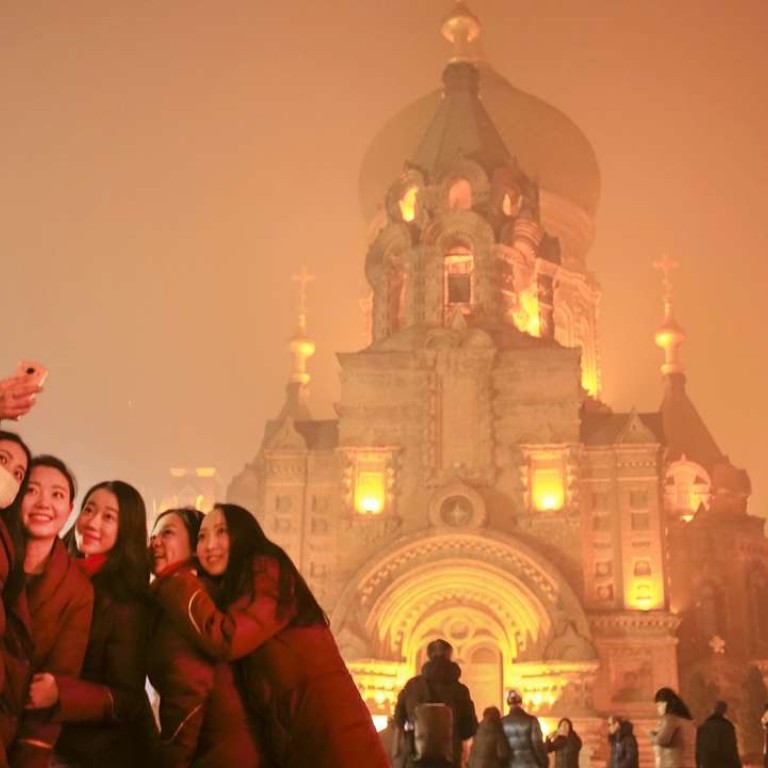
Winter’s chill to spark Northern China’s coal heaters – and yet more smog
Northern China’s population are bracing themselves for further days of polluted air this winter as heating demand increases, China’s Ministry of Environmental Protection has warned.
On Friday night, Beijing issued its first orange alert of smog – the second most serious level after a red alert – since July. The reading of PM2.5 – the finest pollutant particles smaller than 2.5 microns in diameter that can cause the greatest harm to public health – bounced between 104 and 246 micrograms per cubic metre across the capital, which was above the heathy level of 25 for daily exposure stipulated by the World Health Organisation.
Poor visibility led to widespread delays and cancellations of flights departing from or arriving at Beijing airports until midday yesterday, when the sky cleared gradually.
This is the fourth time since October that smog has hit the Beijing-Tianjin-Hebei area, one of China’s most urbanised regions with a population of more than 100 million.
At a press conference on Thursday, the ministry said that the number of days of smog in the region could increase this year, adding difficulties to battling the country’s choking air pollution.

However, it said the peak level of smog would not be as severe as last year when PM2.5 readings hit the 500 maximum mark in many cities in northern China.
Beijing’s former mayor Wang Anshun once made a promise in 2014 of “handing in his head” if he could not solve the city’s air pollution problem by the end of 2017. But over the past three years, Beijing’s air quality has not improved significantly.
In the latest political reshuffle, Wang has been moved to become a Communist Party secretary of the State Council’s Development Research Centre, while Cai Qi, a close ally of President Xi Jinping, became the capital’s acting mayor on Monday.
Over the past 10 months, the average PM2.5 concentration in the Beijing-Tianjin-Hebei region dropped 14.5 per cent year-on-year to 59 micrograms per cubic metre, while nationwide it declined by 12.5 per cent annually, according to the ministry.
But a bigger challenge lies ahead when the increasing demand of heating could push up the consumption of coal that further worsens the air pollution.
China’s central and local governments are facing pressure – both home and abroad – to tackle air pollution while keeping the country’s economic growth at a stable level.
The Chinese public have become more sensitive to the health hazards caused by smog and the international community keeps encouraging China to take more responsibility for addressing global climate issues.

On Friday, the State Council announced a new climate plan pledging to cut 18 per cent of its carbon emissions by 2020 compared with levels in 2015 – the year when the Paris Agreement was signed by nearly 200 countries to end the era of fossil fuels.
Beijing’s plan aims to cap China’s coal consumption at about 4.2 billion tonnes in 2020 while expanding the share of non-fossil fuel energy such as hydroelectric power and nuclear power to 15 per cent of China’s total generation capacity.
In its latest inspection in the areas surrounding Beijing, the ministry found several local governments had not been proactive enough in stopping industrial discharge of toxic smoke and regulating the construction dust on the roads – two significant factors leading to air pollution.
One major obstacle to keeping China’s smog problem under control is the prevalent forgery of air quality data across the country.
In Xian, in Shaanxi province, officials from a local environmental protection bureau sneaked into a local air monitoring station and wrapped a collector of airborne pollutants with gauze, which filtered the air and improved the data, according to mainland media reported in October. Five officials involved in the data manipulation have since been arrested and are under investigation.
Other exposed forgeries of environmental statistics from factories include pumping more carbon dioxide into the pipeline monitored for air quality to reduce the concentration of pollutants.

